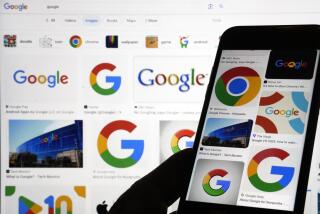A Step Toward Digital TV
- Share via
Enjoying an evening in front of the tube, we might be forgiven our ignorance of an arcane but important struggle going on over digital television, the future of the medium. Monday, after years of wrangling, the two major factions in that struggle finally reached a compromise in the debate on which standard should govern the future of the new technology, which promises to deliver the picture quality of movie theaters with the sound quality of CDs.
Early next month, the Federal Communications Commission is expected to rule on whether Monday’s industry compromise should be used as a basis for new federal laws governing the future of digital television. The agency should endorse the compromise, which would foster free market competition involving the two standards now under consideration. While it is important to encourage the industry to move swiftly toward the so-called progressive scanning standard, it is essential that the government protect the spirit of the free market. Such competition is not only essential to ensuring the affordability of the new high-definition TV sets, it is the heart of the watershed Telecommunications Act of 1996 and the credo of computer moguls like Microsoft’s Bill Gates.
TV manufacturers and broadcasters had been pushing a standard that would allow digital programs to be transmitted via “interlaced scanning,” which is essentially the technology that manufacturers have used since the 1940s. Its proponents argue that interlaced scanning would keep manufacturing costs down.
The second group, made up of computer industry representatives, had been lobbying the FCC to mandate progressive scanning, a superior technology. Support of progressive scanning would promote the eventual convergence of computers and TV sets. This is the interactive hybrid that would let you scan the local weather and your personal stocks while watching CNN or, with multiple cameras, allow you to watch a baseball game from the baseball’s point of view. Industry analysts say the future lies in this direction.
In addition to offering twice the resolution in half the airwave space occupied by a conventional TV channel, progressive scanning transforms TV from a screen passively stared at by couch potatoes to a two-way communications tool allowing students to talk with instructors or home audiences to pose a question to Oprah.
Banking on the promise of interactive television, the computer industry expects progressive digital TVs to soon be in high demand across the globe. If U.S. manufacturers are able to meet this demand, the industry suggests that its American work force, currently about 2 million people, will be significantly expanded.
The computer camp rightly worried that American industry, historically tight on investments in new technology, would miss the global market opportunity. The only way to get manufacturers and broadcasters to invest in the future, this camp says, is to require them to embrace progressive scanning.
There is some truth to the notion that left alone, various components of America’s TV industry might merely compete with one another in the short-term national market, rather than invest in the kinds of new technology the global market will soon demand. In the compromise reached Monday, the computer coalition agreed to drop its demand that the progressive standard be mandated. The compromise solution is best for competition in the world market.
More to Read
The biggest entertainment stories
Get our big stories about Hollywood, film, television, music, arts, culture and more right in your inbox as soon as they publish.
You may occasionally receive promotional content from the Los Angeles Times.










